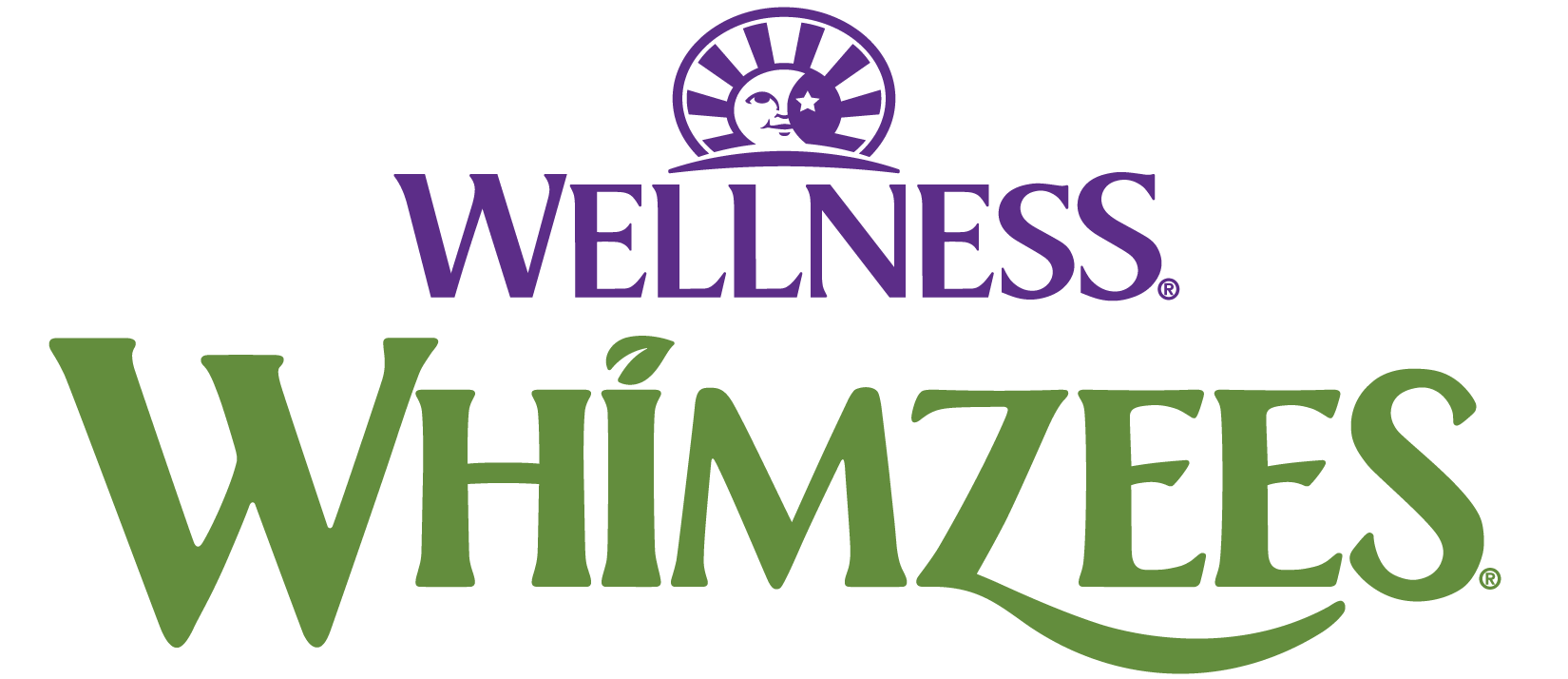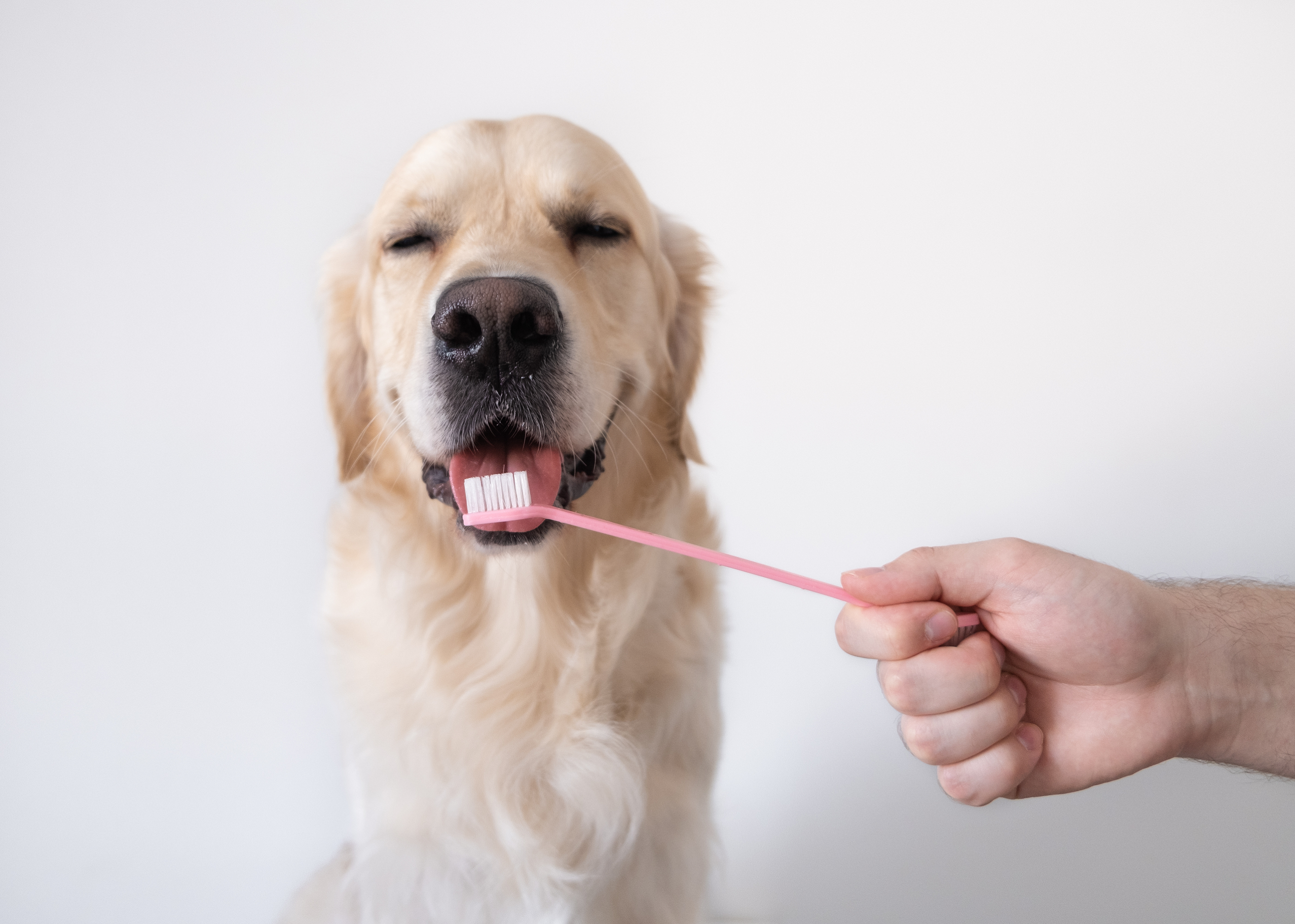Dental health is an essential part of your pet’s overall wellbeing. Dogs use their mouths to eat, drink, play, and more, so keeping your dog’s gums healthy is crucial!
Learn more about the three core ways to support healthy dog gums, what healthy dog gums vs. unhealthy gums look like, and how to recognize signs of dental problems in your pet.
Three ways to support healthy dog gums
Just like humans, dogs need consistent oral care routines to prevent discomfort, pain, stinky breath, and other problems with their teeth and gums. Support healthy dog gums with professional dental cleanings, regular toothbrushing, and approved dental treats and toys.
Schedule regular professional dental cleanings
Frequency: once or twice a year
Professional dental cleanings can help prevent oral health concerns or catch smaller issues before they escalate into more painful (and expensive!) problems. Your pet may be able to receive professional cleanings at their regular veterinarian, or you may need to schedule a separate appointment with a dedicated pet dental hygienist.
Here are a few things your pet might get checked for during their professional dental cleaning:
- Inflamed gums
- Plaque and tartar buildup
- Plaque below the gum line, where toothbrushes can’t reach
- Lumps, cuts, and raised spots
- Damage to the teeth
- Jawline and tooth-root health (using X-rays)
If your dog’s breed is known to be more likely to develop oral problems, you may need to schedule professional cleanings twice a year or more. Otherwise, unless your pet needs any teeth filled or extracted, veterinarian dental exams just need to happen annually.
Vets and pet dental hygienists are trained and skilled at identifying problems that even experienced and detailed pet owners might miss. Even though this part of your pet’s oral hygiene can be expensive, it is one of the best ways to support healthy dog gums.
Brush your dog’s teeth
Frequency: daily, but at least once a week
Did you know plaque can start to accumulate on your dog’s teeth in as little as 24 hours? Brushing your dog’s teeth and gums every day can help prevent plaque and tartar buildup. It also allows you to check for debris stuck in their teeth, lumps, cuts, swelling, or redness.
Establishing a familiar brushing routine can also help make the process much easier and less stressful for you both. Most dogs don’t enjoy having their teeth brushed, but they will learn to tolerate it as part of their schedule – and maybe even come to enjoy the bonding time and attention!
Some supplies you’ll need to brush your dog’s teeth and gums include:
- Dog-specific toothpaste. Human toothpaste can contain harmful ingredients like xylitol and fluoride. Your dog will inevitably eat some of the toothpaste, so make sure you only use toothpaste designed especially for dogs. Toothpaste flavors like peanut butter or beef can also help make the process more appealing for your pet.
- Specially designed toothbrushes. Regular human toothbrushes aren’t designed for dog-shaped mouths. Angled handles, soft bristles, and other special features of dog-specific toothbrushes will help you reach every part of your dog’s mouth more easily.
If you find brushing your dog’s teeth to be a challenge, this advice may help:
- Establish a routine. Even if they resist brushing, sit down with your dog every day to get them comfortable with you touching their snout, teeth, and gums.
- Introduce the supplies. Let your dog sniff and lick the toothbrush and toothpaste. If the brushing supplies are familiar objects, your pet may feel calmer when they’re in use.
- Start small. Use a finger brush or teeth wipes to start. Take each step slowly to help keep your pet from developing negative feelings or anxiety about their oral care.
Learn more tips and tricks for brushing your dog’s teeth in our Something to Chew On blog.
Give your dog dental treats and toys
Frequency: daily
Dog dental treats, chew toys, oral sprays, and water additives are specially designed to help prevent plaque and tartar buildup. Some of these items can also provide necessary nutrients or an outlet for your dog’s natural chewing and gnawing instincts to keep them healthy, mentally stimulated, and happy.
If you’re unable to brush your dog’s teeth every day, a daily dog dental chew can also help you maintain their oral health between brushings and professional cleanings. For example, our WHIMZEES® BRUSHZEES® have grooves and ridges that help remove plaque and tartar, massage their gums, reach their back teeth, and freshen their breath.
Our BRUSHZEES are also approved by the Veterinary Oral Health Council (VOHC). The VOHC Seal of Acceptance indicates that these dog dental chews are scientifically proven to help reduce plaque and tartar, so you know you’re getting the best product for your pet.
Healthy dog gums vs. unhealthy dog gums: what to look for
Knowing what healthy dog gums vs. unhealthy dog gums look like is necessary as you take care of your dog’s teeth and gums. This knowledge will help you decide whether you need to talk to your vet about potential problems or make changes to your dog’s oral care routine.
Visible signs of healthy dog teeth and gums include color and texture.
- Healthy dog gum color: most dogs should have pink gums, a color somewhere between bubble gum and salmon.
- Healthy dog gum texture: smooth and wet, attaching to each tooth just below the crown. They should not be swollen, rippled, or lumpy.
- Healthy dog teeth color: like human teeth, your dog’s teeth should be a clean white color without spots, yellowing, or plaque buildup.
- Healthy dog teeth texture: solid, intact, strong teeth with no jagged edges or cracks.
You should be concerned if you notice:
- Lumps, cuts, raised spots, or blood
- Gums that are too pale, bright red, or inflamed
- Scaly, sticky, or dry gums
- Cracks, chips, or broken areas in their teeth
Some dogs may have naturally black gums or dark pigmented spots, so looking for discoloration can be challenging. Overall, you should remember what your dog’s gums usually look like and contact your vet if anything changes.
Conclusion
A regular oral care routine can do wonders for your pet. Support healthy dog gums and control the buildup of plaque and tartar with annual professional cleanings, daily toothbrushing, and dog dental chews and toys.


